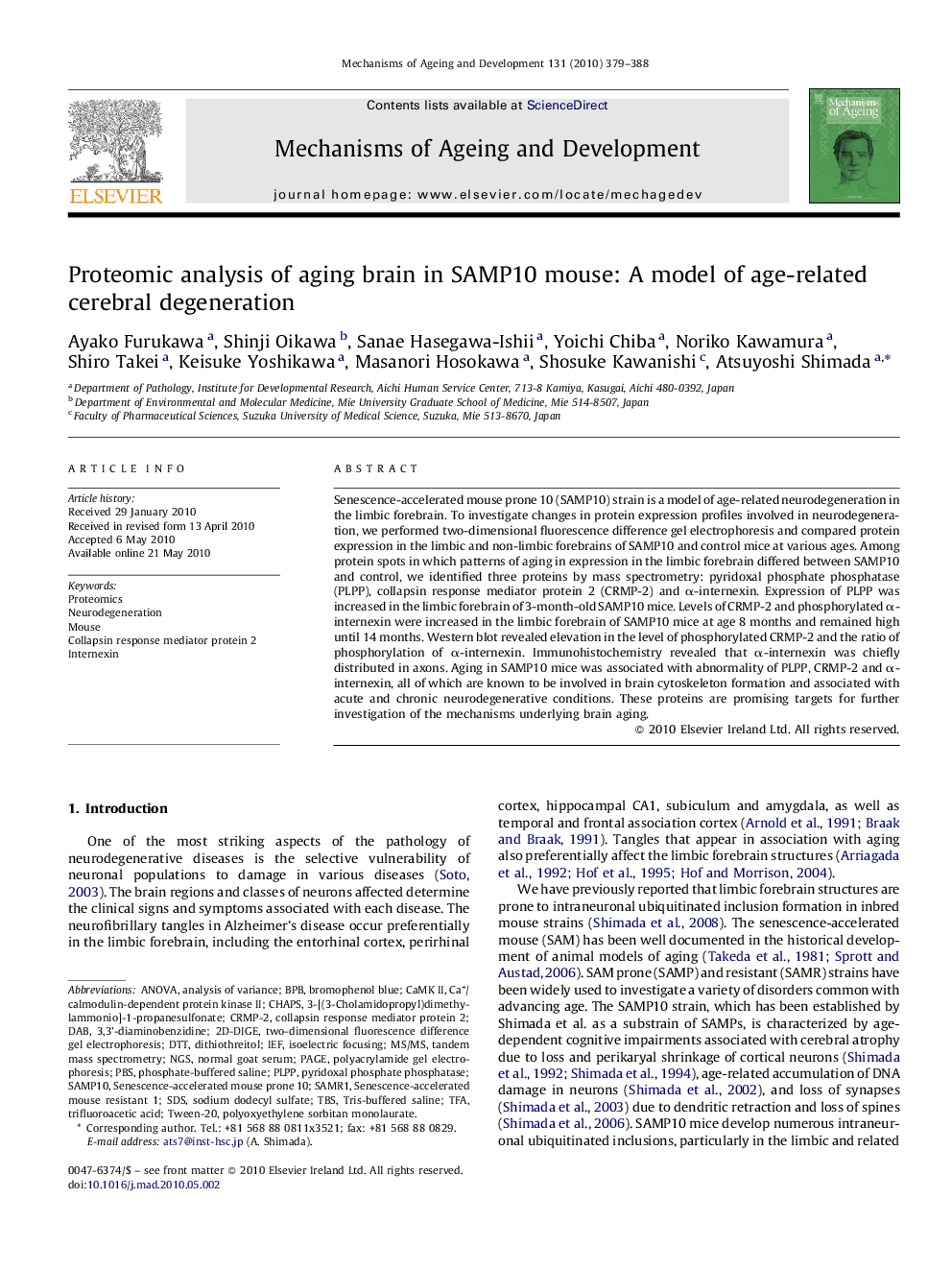| Article ID | Journal | Published Year | Pages | File Type |
|---|---|---|---|---|
| 1919488 | Mechanisms of Ageing and Development | 2010 | 10 Pages |
Senescence-accelerated mouse prone 10 (SAMP10) strain is a model of age-related neurodegeneration in the limbic forebrain. To investigate changes in protein expression profiles involved in neurodegeneration, we performed two-dimensional fluorescence difference gel electrophoresis and compared protein expression in the limbic and non-limbic forebrains of SAMP10 and control mice at various ages. Among protein spots in which patterns of aging in expression in the limbic forebrain differed between SAMP10 and control, we identified three proteins by mass spectrometry: pyridoxal phosphate phosphatase (PLPP), collapsin response mediator protein 2 (CRMP-2) and α-internexin. Expression of PLPP was increased in the limbic forebrain of 3-month-old SAMP10 mice. Levels of CRMP-2 and phosphorylated α-internexin were increased in the limbic forebrain of SAMP10 mice at age 8 months and remained high until 14 months. Western blot revealed elevation in the level of phosphorylated CRMP-2 and the ratio of phosphorylation of α-internexin. Immunohistochemistry revealed that α-internexin was chiefly distributed in axons. Aging in SAMP10 mice was associated with abnormality of PLPP, CRMP-2 and α-internexin, all of which are known to be involved in brain cytoskeleton formation and associated with acute and chronic neurodegenerative conditions. These proteins are promising targets for further investigation of the mechanisms underlying brain aging.
